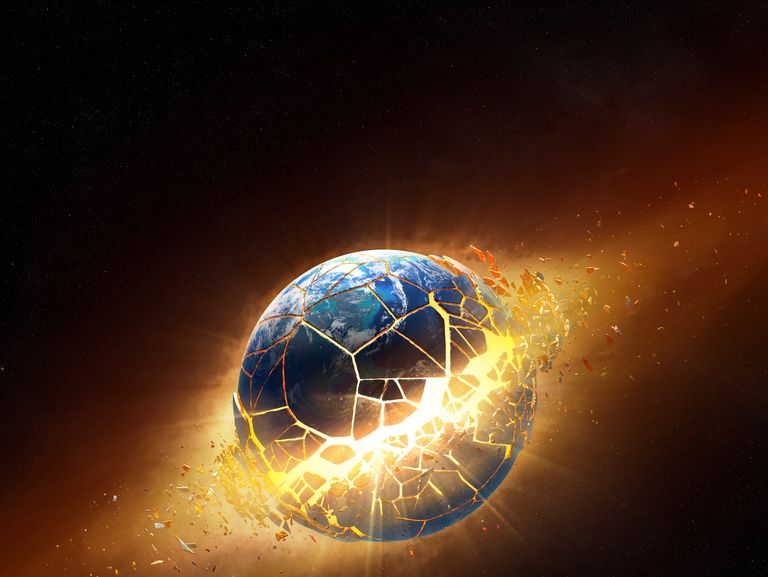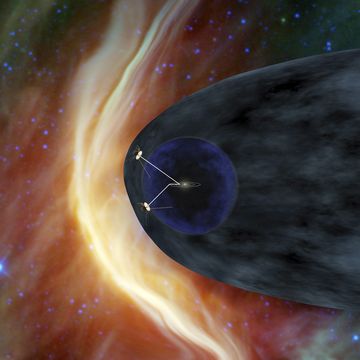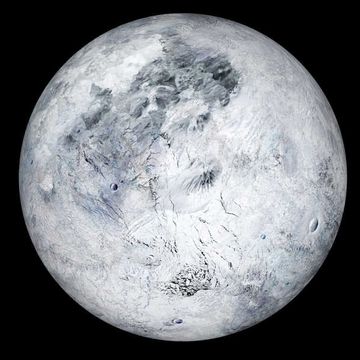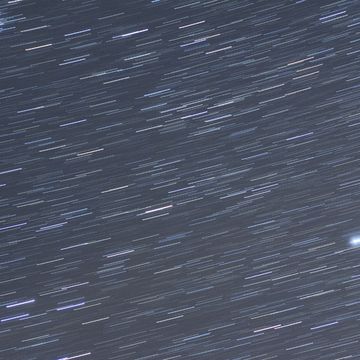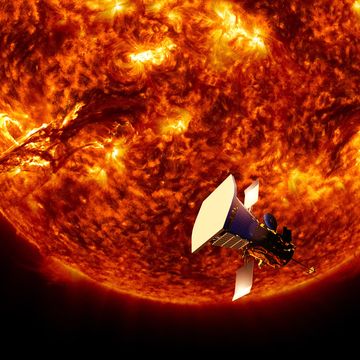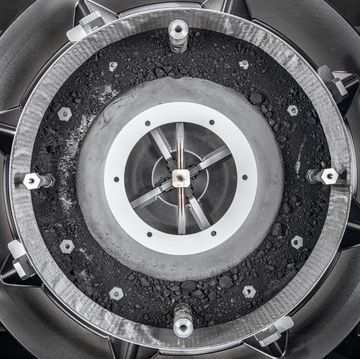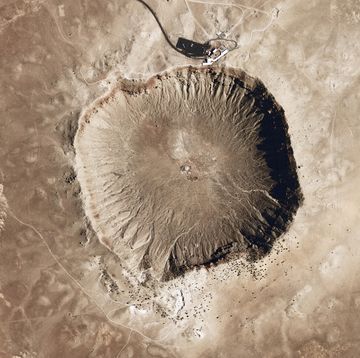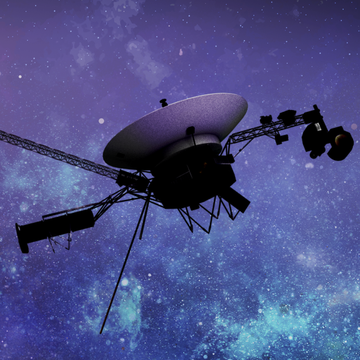- In 5 billion years or so, the sun will expand into a Red Giant and completely consume the Earth.
- For the first time ever, scientists have witnessed this very process, called planetary engulfment, in a star system some 12,000 light years away.
- This discovery will provide astronomers with a blueprint for finding other similar phenomena throughout the universe, especially after the Vera C. Rubin Observatory goes online in 2025.
The Earth has many, many years ahead of it—some five billion in fact, at best estimate—but its eventual end (when it does arrive) won’t be a pleasant one. At that time, our Sun’s core will run out of the hydrogen needed for nuclear fusion. This hydrogen depletion will cause the now helium-rich core to fuse into carbon. The Sun’s core will grow denser and the star will expand by 100 times into something called a Red Giant, devouring any planets in its way.
This doomsday scenario has long been a masterpiece of cosmic nihilism painted using mathematical calculations and our understanding of nuclear physics. but now scientists can add “direct observation” to the mix. Astronomers recently announced that 12,000 light years away, they had witnessed a star devouring a Jupiter-sized planet for the first time. Their results were published in the journal Nature.
As The New York Times noted, the evidence of similar “planetary engulfment” events can be found throughout the universe, as stars appear to be frequently dimmed by planetary matter. But this is the first time scientists caught a star in the act. A bone-chilling animation from Caltech captures this dazzling death spiral as the sun-like star essentially consumes the planet whole.
“This is the eventual fate of the Earth,” Kishalay De, co-author and NASA Einstein fellow at the MIT told NYT. “We are really seeing what the Earth is going to run into five billion years from now.”
Scientists were lucky to see this cosmic feast at all. In May 2020, De was using the Swicky Transient Facility at the Palomar Observatory in California in an effort to find stellar explosions called red novas. Instead, he came across a strange light signature emanating from a star called ZTF SLRN-2020 (a name only an astronomer could love). Comparing the star’s spectra with additional measurements from ground-based observatories and past infrared data from NASA’s NEOWISE space telescope, De saw that ZTF brightened in the infrared almost a year prior to his strange-light-signature discovery. This all but confirmed that dust—which emits infrared light—was forming around the star. In other words, astronomers were witnessing a star mid-meal.
“Very few things in the universe brighten in infrared light and then brighten in optical light at different times,” De told NASA. “So the fact that NEOWISE saw the star brighten a year before the optical eruption was critical to figuring out what this event was.”
As the doomed planet skimmed ZTF’s surface, it flung the star’s hot gas out into space, where it eventually cooled and turned to dust. The initial optical light burst lasted 10 days, and the star continued emanating a strange glow for six months as it consumed the planetary material.
The timing for capturing this very first planetary engulfment couldn’t be better. Now that scientists have some idea what this process looks like, it can help inform future attempts to find similar phenomena. This will be especially important when the Vera C. Rubin Observatory comes on line in 2025, giving scientists the ability to scan the night sky like never before. Perhaps ZTF will help astronomers understand the fate of other star systems that exhibit similar chemical pollution indicative of past planetary engulfment.
As to what all this research illuminates about the end of our own planet, well, maybe it’s best not to think about it.
Darren lives in Portland, has a cat, and writes/edits about sci-fi and how our world works. You can find his previous stuff at Gizmodo and Paste if you look hard enough.
